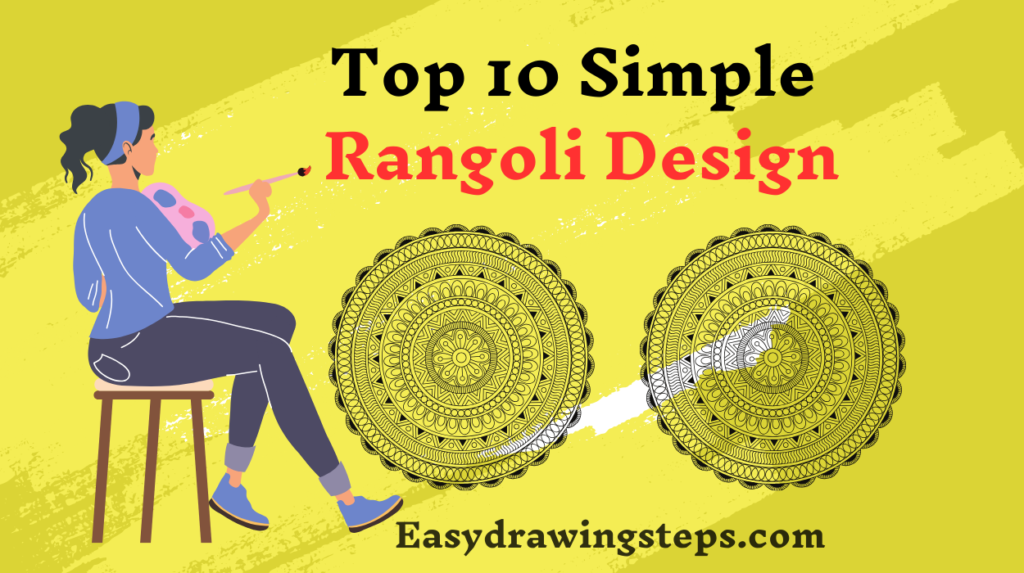
Simple Rangoli Design : Rangoli, a traditional Indian art form, involves creating beautiful patterns on the floor using colored powders, rice, or flowers.
These designs are often made during festivals, celebrations, and auspicious occasions to bring good luck and welcome guests.
If you’re looking to create stunning rangoli designs without spending hours perfecting them, here are some simple yet captivating ideas to get you started.
1. Flower Petal Rangoli Design
A flower petal design is one of the most popular and straightforward rangoli designs. Start by drawing a central circle or a flower. From this central point, draw petals radiating outward. Each petal can be filled with a different color to make the design vibrant.
This design mimics the beauty of blooming flowers and is suitable for any occasion. Adding intricate details like veins on the petals or small flowers within each petal can make the design more detailed and appealing.

Also Read : How to draw rangoli design easy simple
2. Dot and Line Pattern Rangoli Design
The dot and line pattern is based on creating a grid of evenly spaced dots, which you can connect using straight or curved lines to form various geometric shapes and patterns. Start by placing dots at equal intervals in a grid pattern.
Connect these dots with lines to create shapes like squares, triangles, hexagons, or more complex shapes. This design is very flexible, allowing for a wide variety of patterns, and is ideal for beginners due to its simplicity.

3. Peacock Feather Rangoli Design
The peacock feather design is elegant and adds a touch of nature to your rangoli. Begin by drawing the basic outline of a peacock feather, including the central shaft and the eye-like pattern near the end of the feather.
Fill the feather with vibrant colors such as green, blue, and yellow. Add intricate patterns within the feather to represent the natural details of a real peacock feather. This design is perfect for festivals and special occasions, symbolizing beauty and grace.

4. Circular Mandala Rangoli Design
A circular mandala design consists of concentric circles filled with intricate patterns. Start with a central point and draw several circles around it.
Each circle can be divided into segments and filled with different designs, such as zigzags, swirls, dots, and floral motifs. Mandalas are often used in rangoli because of their symmetrical and meditative qualities.
This design requires patience and attention to detail, but the result is a visually striking and harmonious pattern.
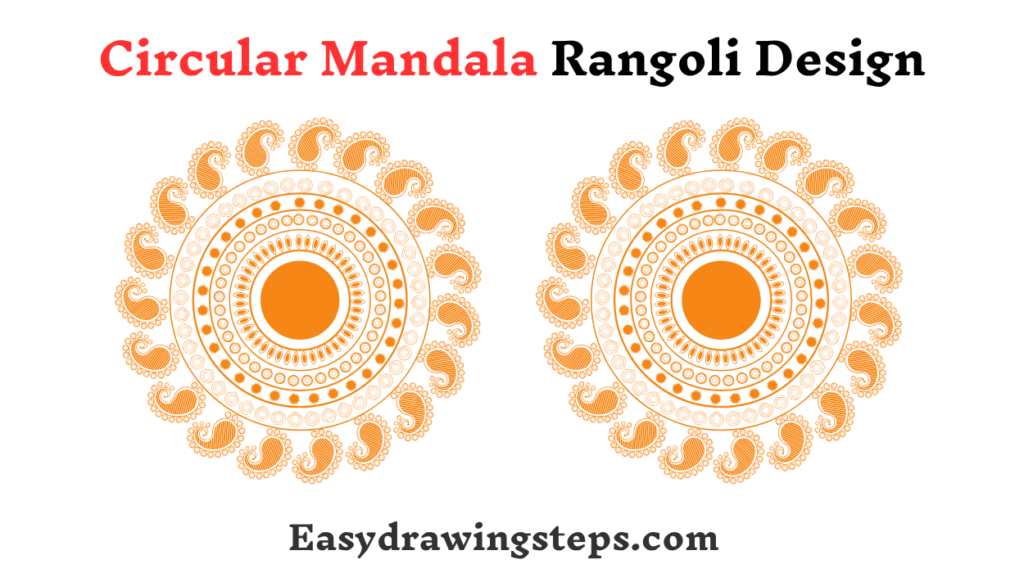
5. Swastika Symbol Rangoli Design
The swastika is a traditional symbol of good fortune and auspiciousness in many cultures. Start by drawing a simple swastika in the center of your rangoli.
Decorate the arms of the swastika with small patterns like dots, lines, or floral designs. Surround the swastika with additional elements like circles or squares to enhance its appearance. Use bright and contrasting colors to make the symbol stand out.
This design is often used in religious and festive occasions to invoke positive energy.

6. Diya (Oil Lamp)
A diya or oil lamp design is especially popular during Diwali. Draw the basic shape of a diya, which includes a bowl and a flame.
Add decorative elements to the bowl, such as patterns or floral designs, and use bright colors to fill in the flame and the lamp. The diya symbolizes light and dispelling darkness, making it a meaningful and beautiful rangoli design.
You can add multiple diyas in your design or place them in a circular arrangement for a more elaborate pattern.
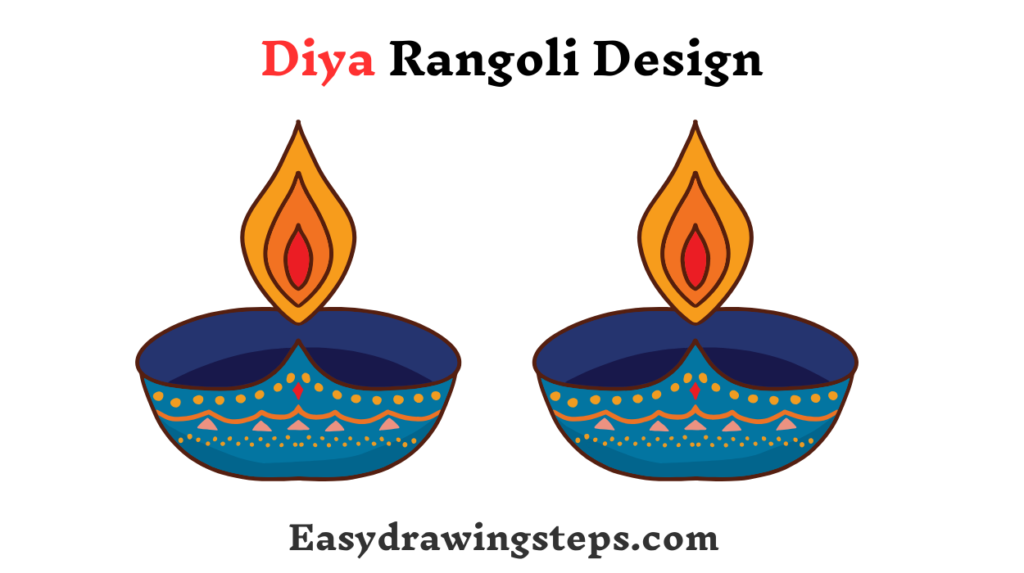
7. Leaf Motif Rangoli Design
Leaf motifs are simple yet elegant designs that bring a touch of nature into your rangoli. Start by drawing the outline of a leaf and fill it with green color.
Add veins within the leaf using a contrasting color to give it a realistic look. Arrange multiple leaves in a circular pattern or create a border around a central design.
Leaf motifs are versatile and can be combined with other elements like flowers or fruits to create a more complex design.
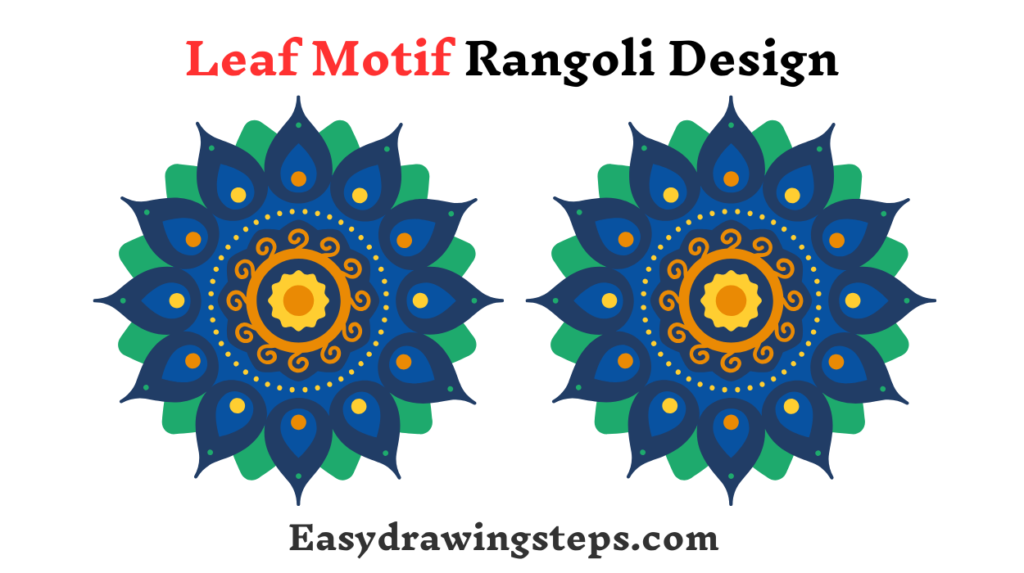
8. Butterfly Rangoli Design
A butterfly design is cheerful and colorful, making it perfect for celebrations. Start by drawing the basic outline of a butterfly with open wings.
Fill the wings with vibrant colors and patterns, such as dots, stripes, or swirls. Add details like antennae and body segments to complete the butterfly.
This design can be as simple or as intricate as you like, and you can draw multiple butterflies to create a lively scene.
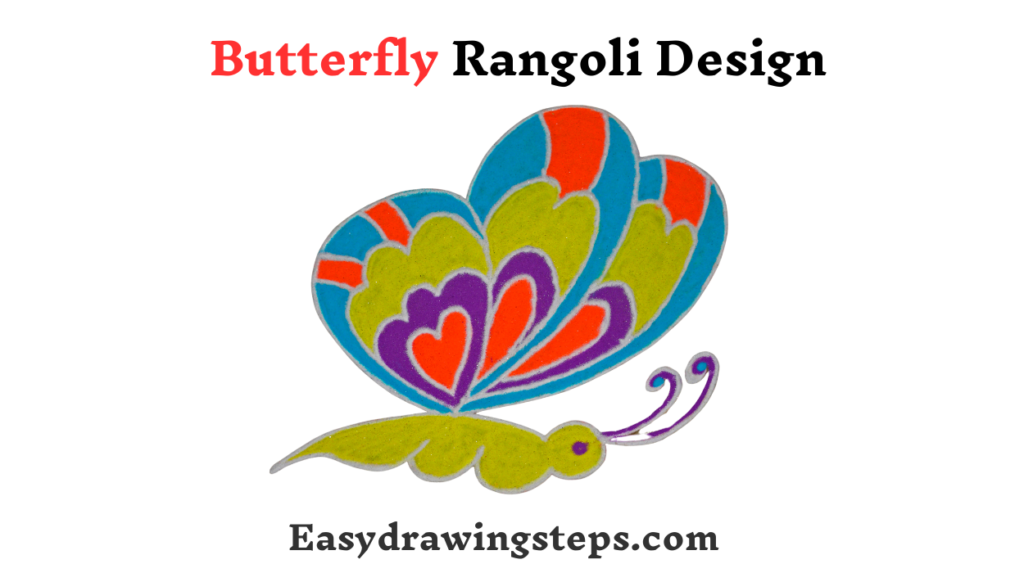
9. Star Rangoli Design
Star designs are simple and eye-catching. Start with a basic star shape in the center of your rangoli. Add layers of smaller stars or decorative elements around the main star.
Use different colors to make each star distinct and the overall design more vibrant. Stars can be arranged in various patterns, such as in a circular formation or scattered across the rangoli, making this design versatile and easy to adapt.

10. Simple Kolam Rangoli Design
Kolam designs are traditional South Indian rangoli patterns made with continuous lines. Start with a basic geometric shape like a square, rectangle, or hexagon.
Use continuous lines to create symmetrical patterns within the shape. Rice flour or chalk powder is typically used to draw kolams.
These designs are often symmetrical and can be expanded by adding more lines and shapes. Simple kolams are perfect for daily practice or for welcoming guests during festivals.
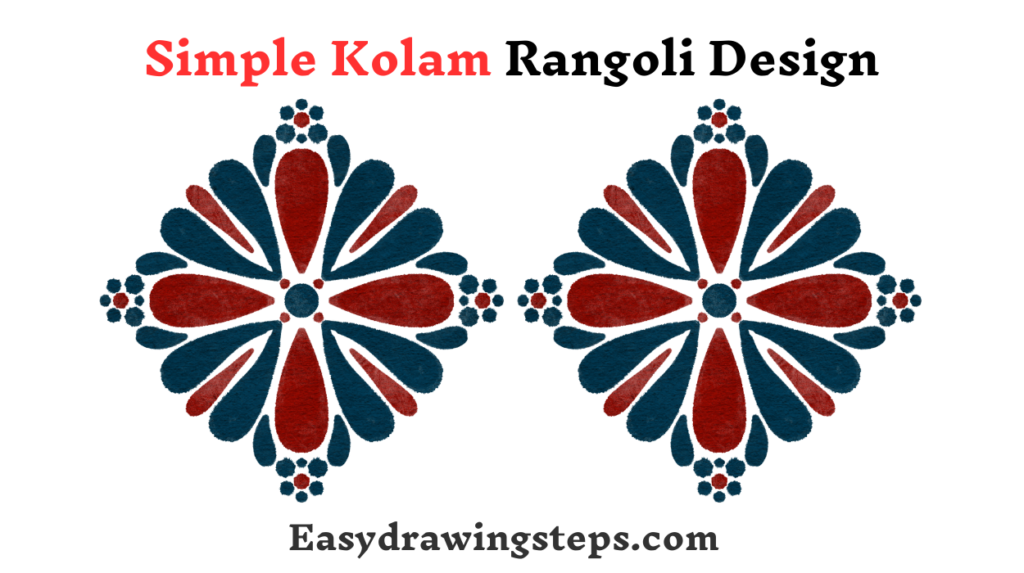
Tips for Creating Simple Rangoli Designs
- Use Stencils: Stencils can help you create perfect shapes and patterns easily, making the process quicker and more precise.
- Start Small: Begin with a small design and gradually increase the complexity as you get more comfortable. This helps build confidence and skill.
- Use a Color Palette: Choose a limited number of colors that complement each other for a cohesive look. This ensures that your rangoli is visually appealing and not overwhelming.
- Practice Symmetry: Symmetrical designs are pleasing to the eye and easier to balance. Use guidelines or a ruler to help maintain symmetry.
- Incorporate Traditional Symbols: Using traditional symbols like the swastika, lotus, or Om can add cultural significance to your rangoli, making it more meaningful.
- Keep It Clean: Use a small brush to clean up edges and correct mistakes, ensuring that your rangoli looks neat and polished.
These detailed explanations and tips will help you create beautiful and Simple Rangoli Design for any occasion.
FAQ
How can beginners start with simple rangoli designs?
Beginners can start with simple rangoli designs by practicing basic shapes like circles, squares, and dots. They can gradually progress to more intricate patterns using straight and curved lines to create geometric shapes. Starting small and focusing on symmetry helps in mastering the art.
What materials are typically used for creating Simple Rangoli Design?
Traditional rangoli designs are made using materials like rice flour, colored powders (rangoli or gulal), flower petals, or even chalk. These materials are used to create intricate patterns and vibrant colors on the floor or ground during festivals and celebrations.
How can one ensure their Simple Rangoli Design stays intact and vibrant?
To keep a Simple Rangoli Design intact and vibrant, ensure the surface is clean and smooth before starting. Use bright and contrasting colors to make the design stand out. Applying a thin layer of oil or water around the edges can prevent the colors from spreading or fading due to foot traffic or weather conditions.
What are some traditional motifs used in simple rangoli designs?
Traditional motifs in Simple Rangoli Design often include floral patterns like lotus flowers, geometric shapes such as squares and triangles, auspicious symbols like swastikas or diyas (oil lamps), and nature-inspired elements like leaves and peacock feathers. These motifs vary by region and cultural significance.
Why are Simple Rangoli Design considered auspicious during festivals?
Simple Rangoli Design are considered auspicious during festivals because they symbolize welcoming guests and deities into homes, bringing prosperity and positivity. The intricate patterns and vibrant colors are believed to ward off evil spirits and invite good luck, making rangoli a significant part of festive celebrations in Indian culture.


1 thought on “Top 10 Simple Rangoli Design”